6. Hardware Troubleshooting
Guides for troubleshooting the MP Controller
- 1. Model 1A/1A+ - Using a Y-cable to provide more power to the display
- 2. Model 1A: Display flickering issue or green screen
- 3. Differences: between MP Controller's Models
- 4. Adjusting the brightness of the display
- 5. Cable Recommendations
- 6. MIDI Controller C1-xMP1 not detected (Controller not connected)
- 7. Display restarts
- 8. Display does not power On (Mac or Windows)
- 9. Model 2A/1A+ - Setting the language on the display menu
- 10. Tightening encoders on Model 2A
1. Model 1A/1A+ - Using a Y-cable to provide more power to the display
A Y-cable helps deliver more power to the display when the computer USB port (such as a laptop) cannot provide the necessary power.
- Model 2A has an extra power port on the outside of the enclosure therefore a Y cable is not needed.
- Model 1A+ has an extra power port inside the enclosure on the LCD board which can be used as an alternative to the Y-cable.
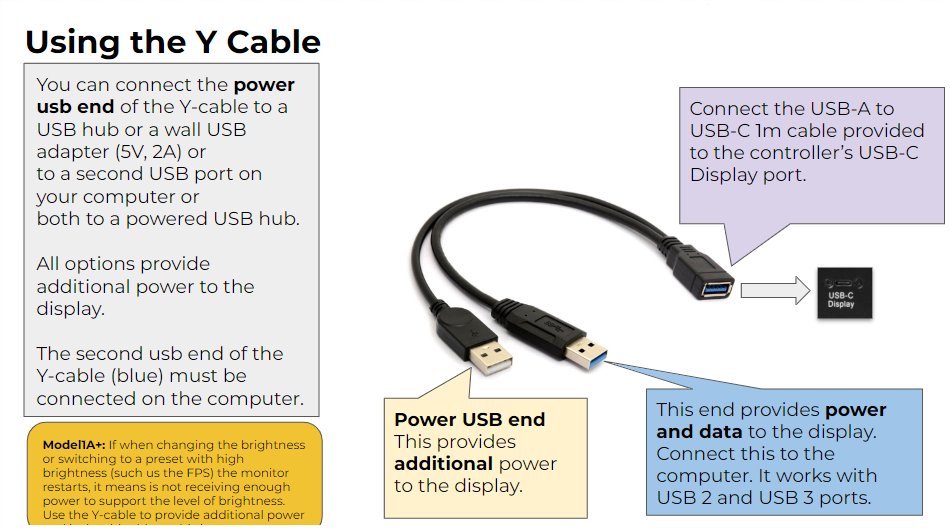

2. Model 1A: Display flickering issue or green screen
This problem is caused by inadequate power to the Display port of the controller via USB-C.
Recommendations:
-
Use the 1m USB-C cables we provided if you are using other longer cables.
-
Connect directly to the USB port of the computer if you are connecting it via a hub.
-
The monitor can also be powered via a wall power adapter (a 10 Watt or more) phone charger can power on the monitor however if you connect the USB-C Display port of the controller directly to a wall adapter the touch function will not work because touch data is transmitted via that port. To use a wall adapter to power the monitor and have the touch function working use a Y-Cable
Green Screen when connecting the HDMI
If you get a green screen, this is called aging mode, it's a testing mode for monitors.
To stop this mode, there is a slit on the side here where there is a power button.

Alternatively, you can open the bottom cover and reach out for the button.
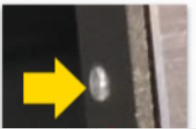
3. Differences: between MP Controller's Models
Model 2A (latest)
The new model 2A was announced in May 2023, has a new enclosure design - a glass flat top, less height on the front for a steeper viewing angle when placed flat on desk, rack mounted ready with an optional rack mount kit, an additional USB-C port for providing extra power when needed.
(Model 1A+ has inside an additional USB-C port, while model 2A has the port available on the outside)
The touch display is exactly the same on both models 1A+ and 2A.
The touch display on model 1A is different and has a matte non-reflective finish.
All 3 models, model 1A, 1A+ and 2A are compatible with our MP Host plugin and all 3 models offer the same functionality.
MP Controller Model 1A+
The MP Controller model 1A+ was released in late November 2022 and it carries the same black metal enclosure as the model 1A.
The MP Host plugin works on both models and there are no differences in that part.
The model 1A+ features:
-
a touch display with twice the brightness (from 250 nits to almost 500 nits)
-
a glossy display finish instead of the matte display of model 1A and it produces more vivid colors than its predecessor
-
an IR remote control for the settings of the display while in model 1A there are buttons
-
works as a single touch screen natively on Mac OS including Apple Silicon while the display in model 1A required the UPDD software to enable the touch functionality on Mac OS after Mac OS Mojave. Practically speaking though, all users end up purchasing UPDD for its amazing additional functionality. (discounted from 150 GBP to 35 GBP with 3 years of support).
-
As model 1A, works with UPDD on Mac OS for enhanced touch functionality like the Smart Magnifier
-
it is a multi-touch display on Windows just like model 1A
-
ships with a 1m Y-cable for better power management/flexibility
4. Adjusting the brightness of the display
Model 1A+/Model 2A
On Model 1A+ and Model 2A a remote control is being shipped with the controller which can be used to control the screen's settings.
The remote control should be pointed to the IR receiver on the MP Controller
Model 1A+
Model 2A
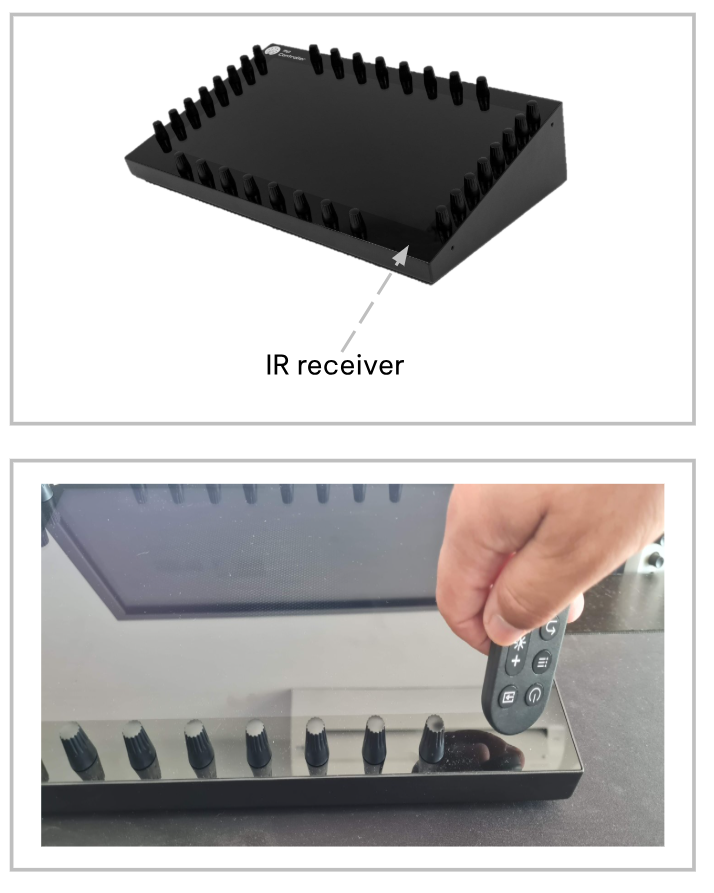 To troubleshoot the remote control see here
To troubleshoot the remote control see here
Model 1A
The display has been pre-set to a brightness level of 100%.
The power drawn when the brightness level is at 100% may be not be enough for some USB ports. You can reduce the brightness level so that the monitor can operate by a lower power or use a
Y-cable to provide more power.
If you increase the angle of placement of the controller to a more upright position, we have found that brightness is satisfactory when set to about 70%.
You can change the brightness level using a small screwdriver to reach the two buttons from the slit on the left side of the controller or unscrew the bottom cover of the controller and adjust with your finger, as described on the next page.

Display Controls
To change the display settings including the brightness you need to use the side buttons. (also easily accessible if you unscrew the bottom cover)

The yellow arrows point to push buttons
The silver upper button is a power switch
The lower control is both a push and up/down button and can be used to enter and control the display options
Display Options
When you push the lower button, you will see the display options on screen.
Push a second time to enter a section and push a third time to select the parameter.
Move the lower button up/down to change the value of the selected parameter
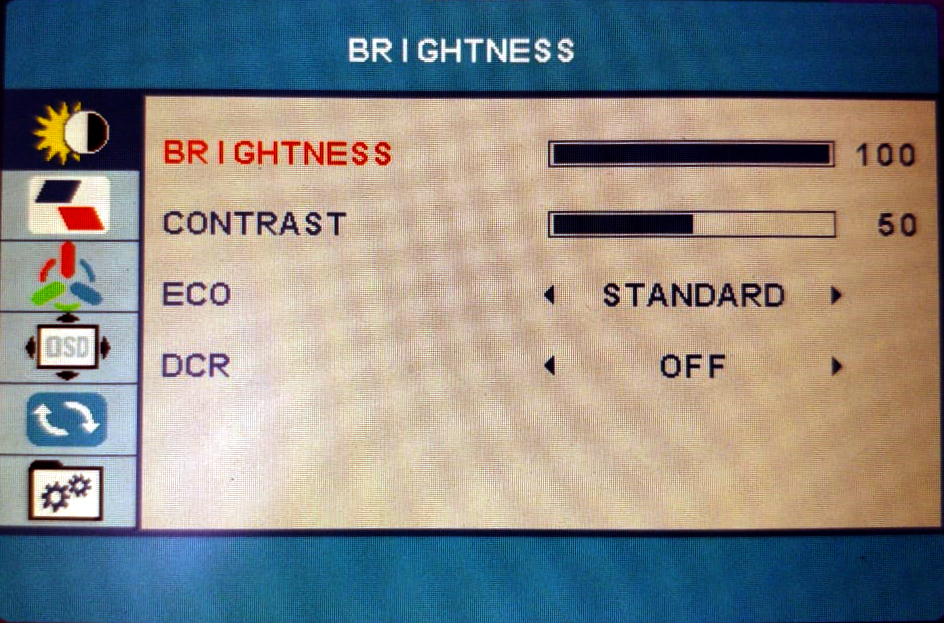
Alternatively, for Windows, Twinkle Tray lets you easily manage the brightness levels of multiple monitors: https://twinkletray.com/
5. Cable Recommendations
If you need to purchase new cables from the market here are some suggestions that work well for MIDI USB and Touchscreen Data, for Macs and Windows PCs.
Please note that for the display we recommend using USB-C 1m cables and if more length is needed use a powered docking station or powered USB hub. Using cables of more than 1m in length will create more resistance and put more stress on your computer's USB port.
For HDMI and MIDI USB-C you can use longer cables, 2m or 3m.
USB 3.1 Gen 2 (USB-C to USB-C)
AmazonBasics USB-C 3.1 Generation 2 to USB-C Cable
Baseus USB C Cable, 100W 5A PD QC 4.0
INIU USB-C-Cable, 100 W, 20 V/5 A, PD QC 4.0
Fasgear 5A 100W Type C Right Angle Cable, 6ft USB 3.1 Gen 2 10Gbps
Thunderbolt 4 (USB-C to USB-C) (best option for connecting the display on thunderbolt)
Cable Matters 40Gbps USB4 Thunderbolt 4 Cable with 8K Video and 100W
Thunderbolt 3 (USB-C to USB-C)
Thunderbolt 3 Cable 40Gpbs/100W/5A,Cabletime
USB-A to USB-C
(only for MIDI, Touch data, Power the monitor but not video signal for video use HDMI)
Amazon Basics - USB C Cable to USB Type A, USB 3.1 2nd Gen USA
Amazon Basics - USB C Cable to USB Type A, USB 3.1 2nd Gen Germany
Anker Powerline II 90 cm USB C to USB A 3.1 Gen2 Cable Germany
Amazon Basics - USB C Cable to USB Type A, USB 3.1 2nd Gen UK
Belkin - 3.1 USB-A to USB-C Cable (USB-C Cable)
USB-C cables with ON/OFF switch
RIITOP USB Type-C On Off Switch Cable 1 m 10 Gbps
RIITOP USB C Extension On Off Cable 1 m 10 Gbps
The cables mentioned in this page are suggestions and MP MIDI has no affiliation with them
6. MIDI Controller C1-xMP1 not detected (Controller not connected)
Mac:
If the C1-xMP1 does not show up in the System Report > USB, see here
Windows:
If the C1-xMP1 does not show up in the Device Manager, see here
7. Display restarts
MP Controller display restarts constantly (flickering)
The cause for this is that the monitor does not receive enough power.
These steps may help to resolve the problem.
- use a different USB port from the computer that provides more power.
- use shorter USB cables (1m recommended cables here in section USB-C to USB-A )
- use a powered USB hub
- use a Y-cable for Model 1A/1A+
For model 2A you can use the additional power port to provide more power using a wall adapter 5V/2A minimum or a power bank as explained here

For model 1A+ and model 2A If when changing the brightness or switching to a preset with high brightness (such us the FPS) the monitor restarts, it means is not receiving enough power to support the level of brightness.
For mode1 1A+ you also have the option to connect a wall adapter on the internal LCD board which has an additional USB-C port. To get to that port you have to unscrew the bottom cover.
For model 1A use the Y-cable to provide additional power.
8. Display does not power On (Mac or Windows)
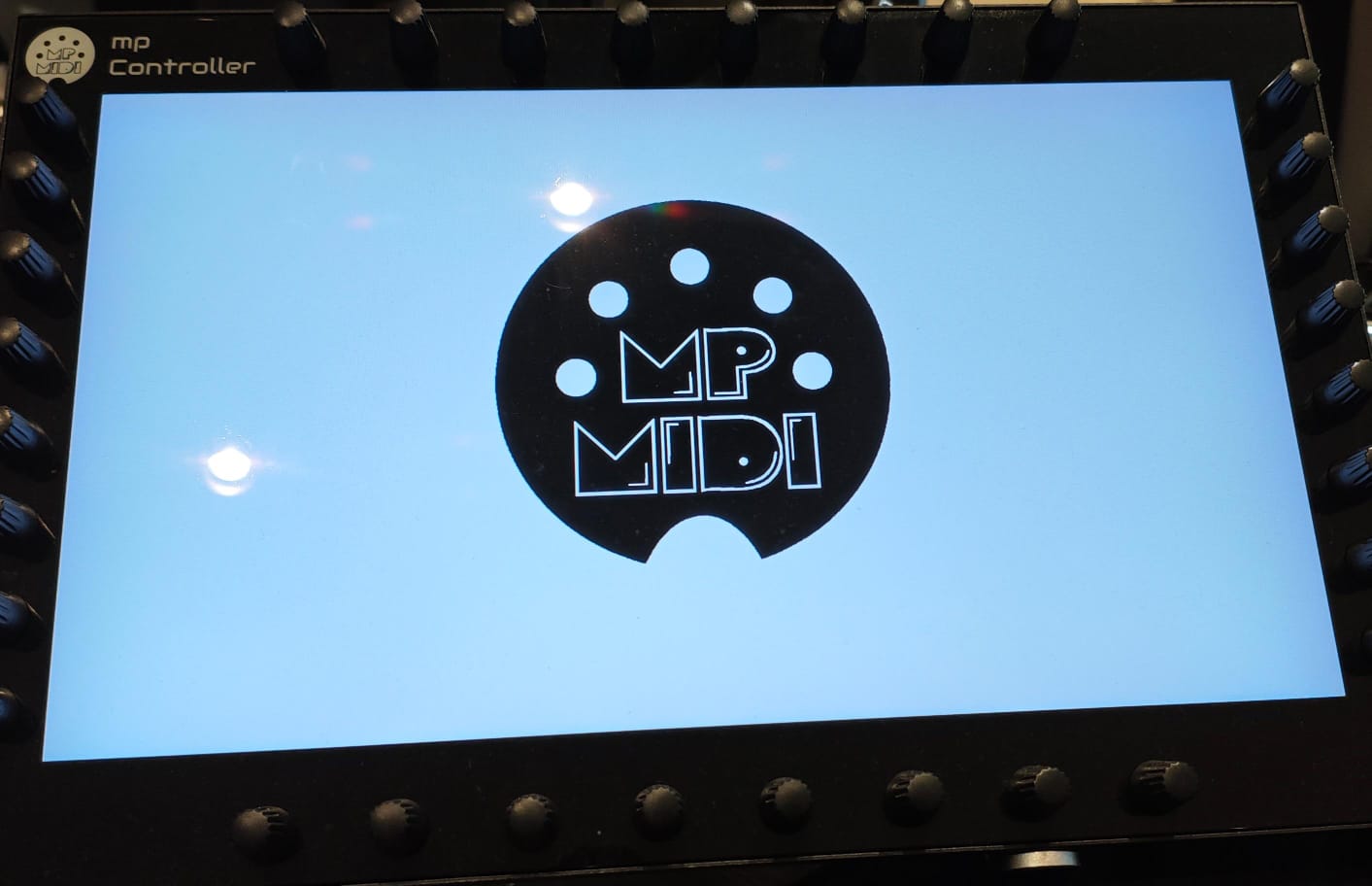
Model 1A: when connected to power only, after 2 seconds it shows on the display the message "No Signal" and then after 2 seconds the message "Power Saving" and it automatically powers off, if there is no video signal or the video signal received is not 1920 x 1080 resolution at 60Hz refresh rate.
If you don't see the "No Signal" message and you are uncertain whether your computer's USB port can provide enough power, connect a wall adapter 5V/2A (or more amps) - like a typical phone charger - and it should show the message "No Signal". This shows that the display receives enough power. Connect the HDMI and when it receives video signal.
If the display is connected to a wall adapter and you are certain it provides 5V/2A, but the display is still not showing anything, you may have an issue with the controller display or a damaged bridge port. Contact us for servicing instructions.
If the display shows video but restarts frequently (flickers), it means you need to provide more power, see the guide here
Providing Power to the display (Model 2A)
Power can be provided by either USB-C ports of the display. (but not the far right USB-C MIDI port)
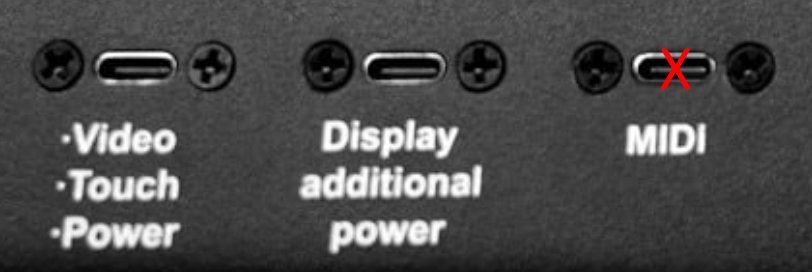
It does not need to be connected to a computer to show the logo when it receives power.
It can be connected on a computer or a wall adapter (5V/2A) or power bank on any of the 2 USB-C ports.
If you only connect to a computer the "Display additional power" port only and HDMI, (but not the Video/Touch/Power port) then the there will be no touch screen functionality.
See video here for connection options.
Power can be provided via external wall adapter (5V/2A), or USB-C to USB-C
(thunderbolt on a computer that has thunderbolt USB-C) or USB-C to USB-A
Black Screen, nothing is shown when connected to power
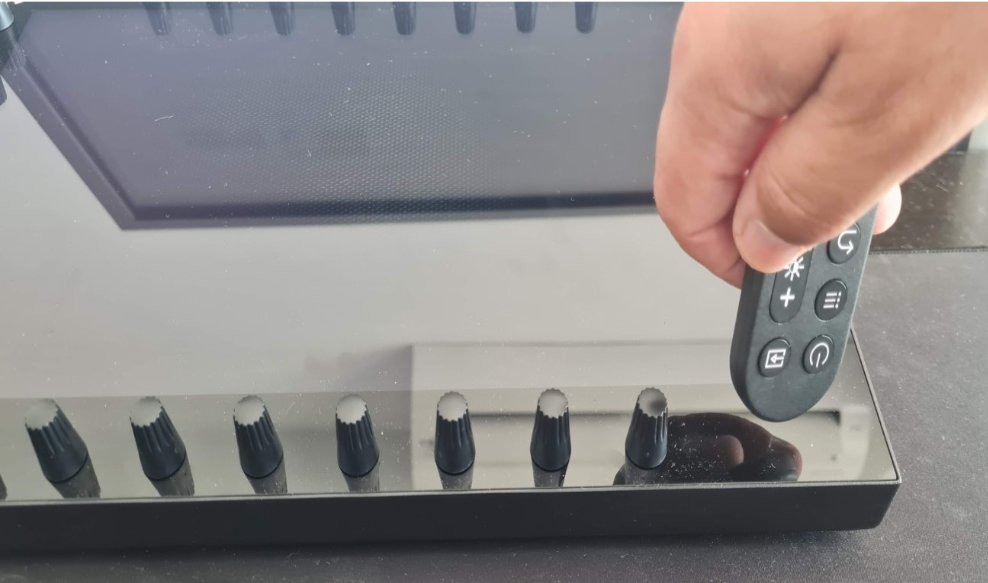 |
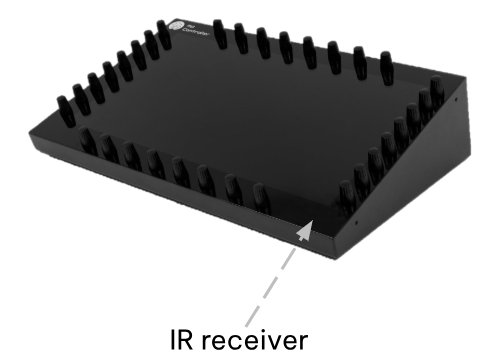 |
Here is how to check that the remote control is working properly and does not need a new battery.
The remote control light is infrared and can't be seen.
Go into a relatively dark room and open your mobile/cell phone camera.
Point the remote to the camera, and press a button on the remote control.
You would see a light blinking in the camera.
See instructional video here
Model 1A: You can bypass the bridge port mounted on the enclosure of the unit, the unit must be disassembled as the LCD board is mounted inside the display. Contact us for servicing instructions.
9. Model 2A/1A+ - Setting the language on the display menu
To change the language on the display OSD menu, see this video.
10. Tightening encoders on Model 2A
You will see the encoder and at its base a nut.
That is the nut that needs to be tightened.
Download an instructional video from here